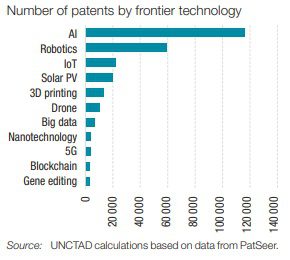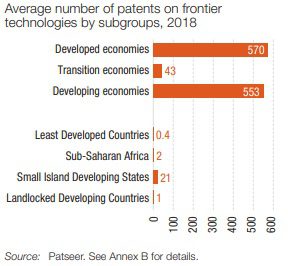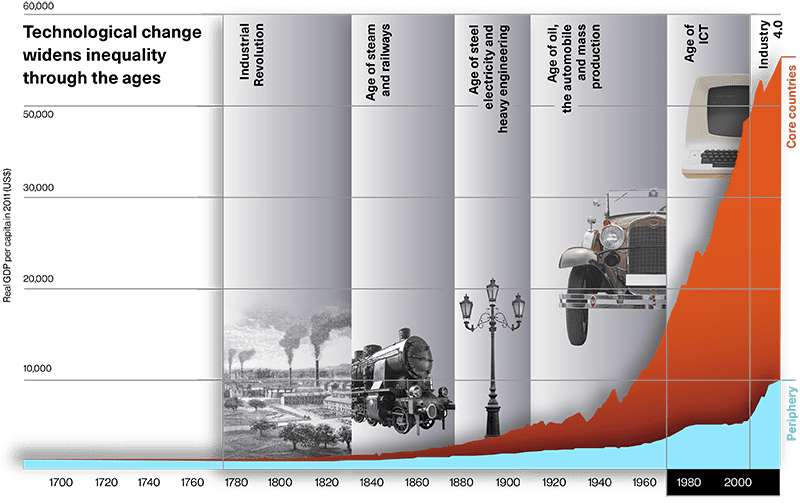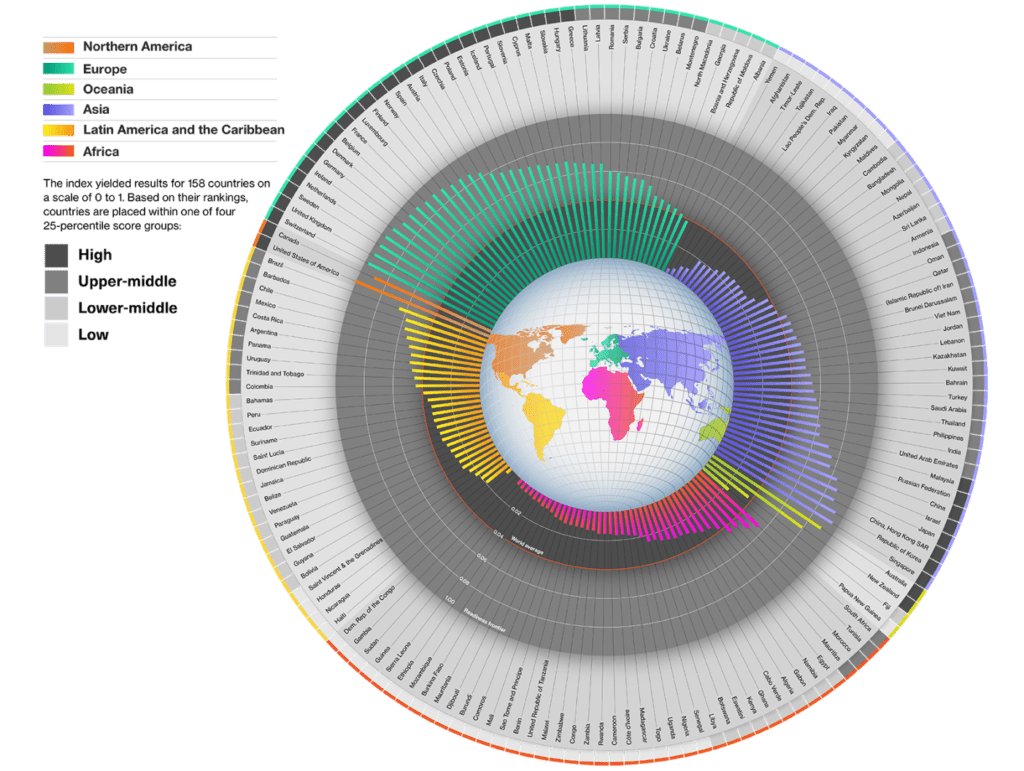Share
Share

United Nations Technology and Innovation Report 2021
Introduction
The United Nations Technology and Innovation Report 2021 examine the likelihood of frontier technologies widening existing inequalities and creating new ones. It also addresses the national and international policies, instruments and institutional reforms that are needed to create a more equal world of opportunity for all, leaving no one behind.
The report shows that frontier technologies already represent a $350 billion market, which could grow to $3.2 trillion by 2025. This offers great opportunities for those ready to catch this technological wave. But many countries, especially the least developed and those in sub-Saharan Africa, are unprepared to equitably use, adopt and adapt to the ongoing technological revolution. This could have serious implications for achieving the Sustainable Development Goals.
The Technology and Innovation Report 2021 urges all developing nations to prepare for a period of deep and rapid technological change that will profoundly affect markets and societies. All countries will need to pursue science, technology and innovation policies appropriate to their development stage and economic, social and environmental conditions. This requires strengthening and aligning Science, Technology and Innovation systems and industrial policies, building digital skills among students and the workforce, and closing digital divides. Governments should also enhance social protection and ease workforce transitions to deal with the potential negative consequences of frontier technologies on the job market.
The report also calls for strengthened international cooperation to build innovation capacities in developing countries, facilitate technology transfer, increase women’s participation in digital sectors, conduct technological assessments and promote an inclusive debate on the impact of frontier technologies on sustainable development.
Patent Activity
Patent publication data were retrieved from the PatSeer database. To align with the publication data, the search period was set as 1996-2018.The patent publication search was conducted using keywords against the title, abstract and claims (TAC)


Catching Technological Waves
The great divides between countries
Human development has been spurred by changes in technology. But so has inequality. Today’s staggering inequalities began to appear with the industrial revolution. The pace of technological change is accelerating due to digitalization and frontier technologies. New technologies can have severe downsides if they outpace a society’s ability to adapt

Every spurt of progress has been associated with sharper inequality between countries.
Between 1820 and 2002, the contribution of between-country inequality to global inequality rose from 28% to 85%. The outcomes for one generation have affected the opportunities for the next – resulting in intergenerational transmission of inequalities
![]() Inequality between countries
Inequality between countries
![]() Inequality within countries
Inequality within countries

Forging ahead at the digital frontiers
This report covers 11 frontier technologies:
- AI
- IOT
- Big data
- Blockchain
- 3d Printing
- Robotics
- Drones
- Gene editing
- 5G
- Nanotechnology
- Solar Pv
As a group, these 11 technologies already represent a $350-billion market, which by 2025 could grow to over $3.2 trillion
Only a few countries currently create frontier technologies, but all countries need to prepare for them. To assess national capabilities to equitably use, adopt and adapt these technologies the Technology and Innovation report 2021 has developed a ‘readiness index.’ The index comprises five building blocks: ICT deployment, skills, R&D activity, industry activity and access to finance.
In general, the economies most ready are in Northern America and Europe while those least ready are in sub-Saharan Africa.
A country readiness index

To view and download the complete report visit: https://unctad.org/webflyer/technology-and-innovation-report-2021
